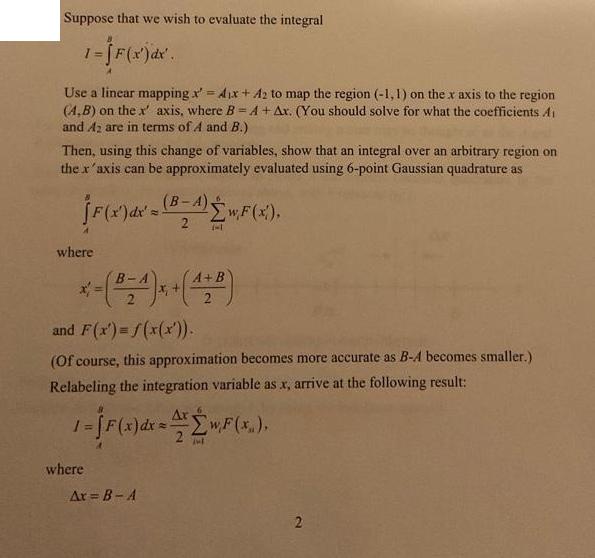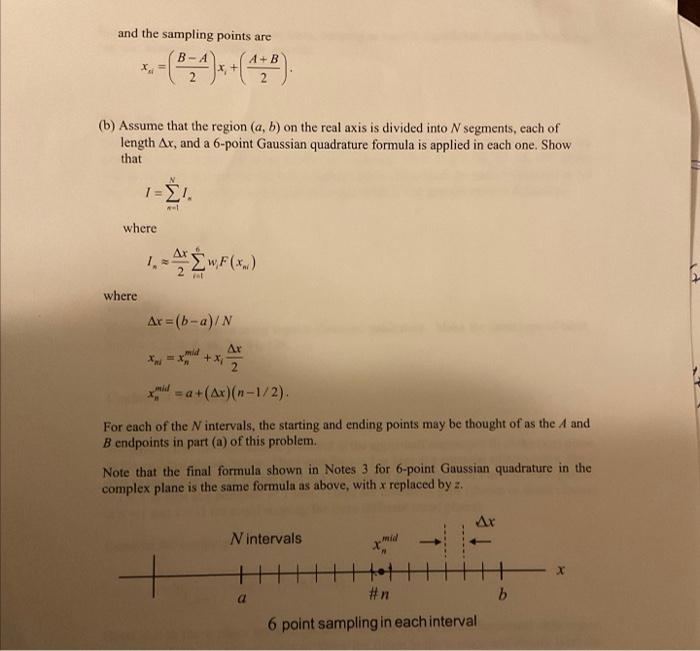Answered step by step
Verified Expert Solution
Question
1 Approved Answer
Suppose that we wish to evaluate the integral 1= F(x) dx'. Use a linear mapping x'= 4x + A2 to map the region (-1,1)


Suppose that we wish to evaluate the integral 1= F(x) dx'. Use a linear mapping x'= 4x + A2 to map the region (-1,1) on the x axis to the region (A,B) on the x' axis, where B=A+Ax. (You should solve for what the coefficients A and A are in terms of A and B.) Then, using this change of variables, show that an integral over an arbitrary region on the x'axis can be approximately evaluated using 6-point Gaussian quadrature as F(x) dx = (B-)w,F(x), where 2 and F(x)=f(x(x')). (Of course, this approximation becomes more accurate as B-A becomes smaller.) Relabeling the integration variable as x, arrive at the following result: where A+B Ax 1 = [F(x) dx = = w;F (x), 2 int Ar=B-A 2 and the sampling points are (b) Assume that the region (a, b) on the real axis is divided into N segments, each of length Ax, and a 6-point Gaussian quadrature formula is applied in each one. Show that B-A A+B - (BZ ^) x + ( ^2B). where where 1 = 1. Al 1.-W.F(x) Ax=(b-a)/ N Ax + x1 Z id=a+(Ax)(n-1/2). Xi mid For each of the N intervals, the starting and ending points may be thought of as the 4 and B endpoints in part (a) of this problem. Note that the final formula shown in Notes 3 for 6-point Gaussian quadrature in the complex plane is the same formula as above, with x replaced by z. Nintervals a Ar H x b + #n 6 point sampling in each interval it P
Step by Step Solution
★★★★★
3.42 Rating (158 Votes )
There are 3 Steps involved in it
Step: 1
a To map the region 11 on the x axis to the region AB on the x axis using a linear mapping we can us...
Get Instant Access to Expert-Tailored Solutions
See step-by-step solutions with expert insights and AI powered tools for academic success
Step: 2

Step: 3

Ace Your Homework with AI
Get the answers you need in no time with our AI-driven, step-by-step assistance
Get Started


